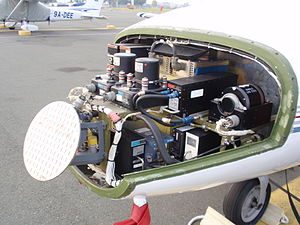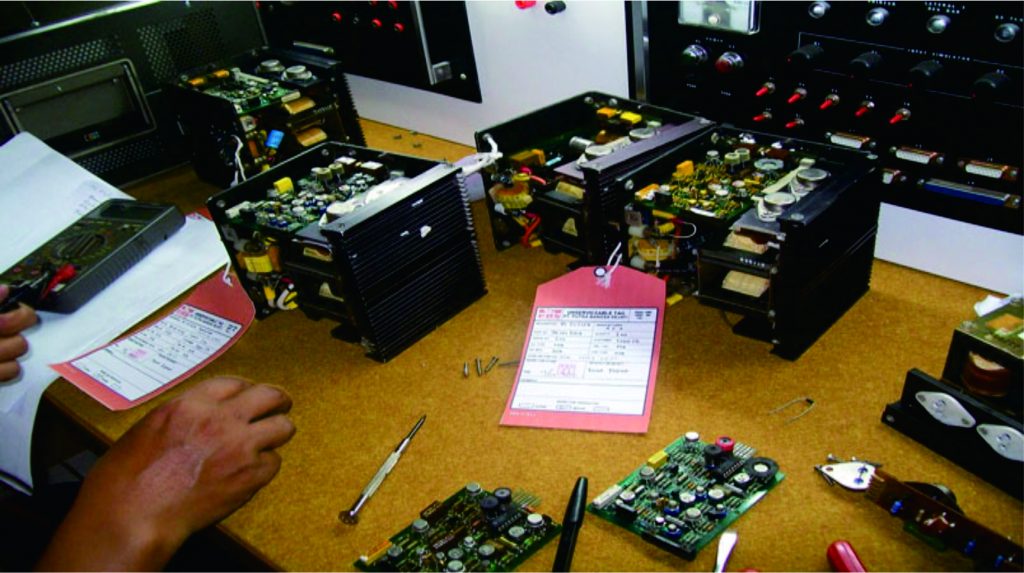



Maintaining components as part of the aircraft
The answer, as usual, lies within the aircraft technical documentation and relevant legislation, Part 145 in this case, for our EASA example. The legislation lists what maintenance manuals should be used with reference to aircraft maintenance, and those include mainly the AMM (aircraft maintenance manual) and IPC (illustrated parts catalogue). However, also the CMM (component maintenance manual) is listed as possible aircraft maintenance data. So what can we do?
In fact, this is actually quite simple. The AMM will tell you what you are allowed to do on an aircraft and hence, what technical actions are considered aircraft maintenance rather than component maintenance. It is possible to perform maintenance tasks in accordance with a CMM provided the AMM refers to it and tells you to perform those tasks. The regulation itself allows for component maintenance in accordance with a CMM under A category approval provided the component does not need to be removed from the airframe in order to undergo such maintenance unless it is being removed only for the purpose of obtaining better access. This may sound complex, but it really isn’t – the general idea is that you can do component maintenance under the aircraft category in two cases:
- When the AMM tells you to do so by providing appropriate instructions or by pointing to a relevant CMM
- When the maintenance of the component does not require the unit itself to be removed from the airframe except for the purpose of improving technical access. This means that you cannot perform any component maintenance which requires shelf tests or mechanical finishing, for instance.
Furthermore, the IPC which I mentioned earlier, gives you a list of all aircraft parts and components. This means that all the part numbers which are listed in the IPC can normally be replaced on the aircraft. In other words, if the IPC lists a component as one part number and does not list the specific pieces which make up a given component, it should generally be considered as a standalone unit, which needs to be maintained under a component maintenance approval.
So now we know what component maintenance is not. So how do we go about fixing the components which are being removed from the aircraft?
Maintaining components on their own
The ability to fix components requires a different kind of Part 145 approval – an approval within the C category. There are several of those categories, numbered C1, C2, C3 .. and so on and they are more or less structured by ATA chapters (so you get categories like hydraulics, or landing gear). This approval allows you to do something, that is not allowed when you maintain components in the A category as described above – it allows you to issue a component release certificate in the form of an EASA Form One or equivalent (like the FAA Form 8130).
The components release certificate is a document stating that the component you have just performed maintenance on is ready for release to service within the limits prescribed in relevant documentation or set forth by your limitations (workshop limitations). The EASA Form One is mandatory for operators (your customers) to be able to fit the component to their aircraft.
Typical component maintenance events
There are three main component maintenance events which are generally performed by specialized shops:
- Aircraft Component Overhaul
- Aircraft Component Repair
- Aircraft Component Modification
All of those have their own specifics and require a slightly different approach from both the operator / airworthiness provider and the workshop. Let’s look at them in slightly more detail.
The overhaul of aircraft components
Even though modern aircraft strive away from hard time maintenance, and condition monitoring is becoming the main approach for maintenance steering groups, many components still require regular overhauls once in a while.
An overhaul is sometimes called a major repair, although personally I don’t like this term as it is highly confusing. In most cases, when an overhaul is required, the operator will provide the workshop with a component which is generally serviceable except for the fact that it has reached it’s hard time limit. This means that there will be no defect syndromes to take care off and no defect description as such.
Overhauls are defined either in component maintenance manuals (CMM) or in specific overhaul manuals (OM) although the latter is generated mainly for major components such as engines, propellers or landing gear. Whatever its name, the technical documentation specifies exactly what needs to be accomplished during an overhaul of the given aircraft component. Such tasks generally include:
- Dismantling of the component to given detail
- Thorough detailed visual inspections and special inspections (such as NDT) of selected parts
- The discarding and replacement of parts which have life limits within the components or need to be replaced whenever the component is torn down (such as seals)
- Cleaning, fixing of known and detectable defects
- Reassembly
- Thorough bench testing of the component
As a result, we get a component which is treated as new without additional limits imposed. What’s worth noting, however, is that especially for major components (like landing gear or engines) there are life limited parts within a components, and their life limit is often longer than the TBO (time between overhaul) for the component itself. As a result, we are allowed to place a “used” part into a component during overhaul. In order for this to be possible, the repair shop needs to obtain from the operator or airworthiness provider accurate and properly signed life limit details on the part – this is the workshops only source of information regarding the parts inside the overhauled component. Without this, they will not be able to release the component to service and hence will have to replace all parts with brand new ones, which is generally quite expensive and an unnecessary cost as such.